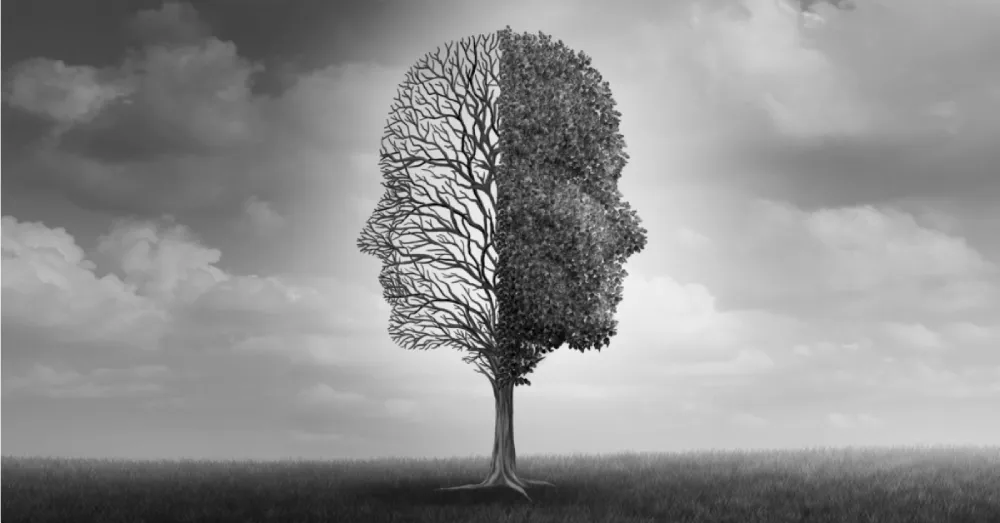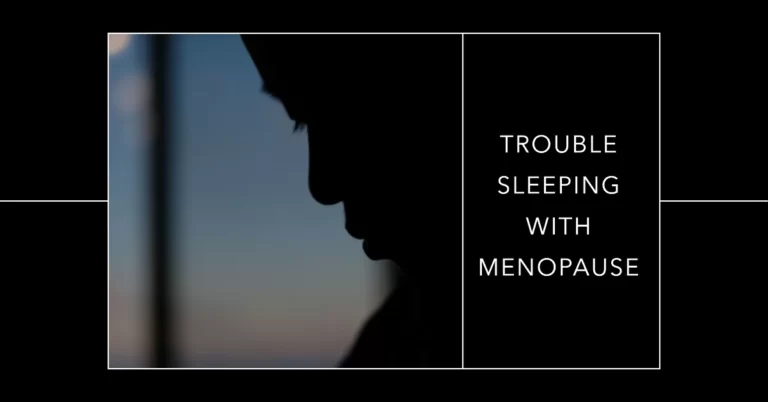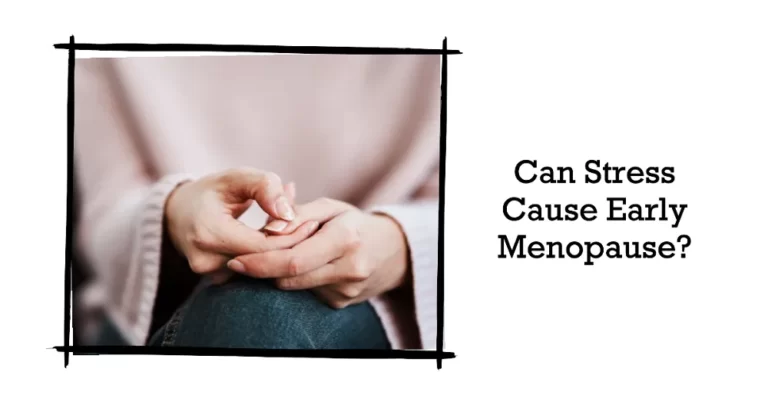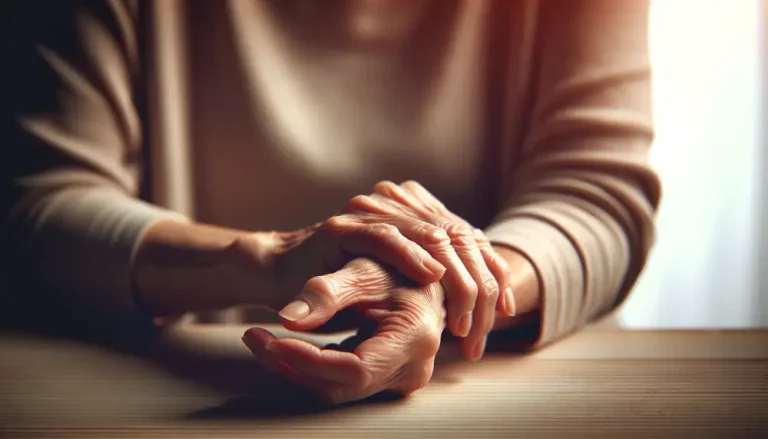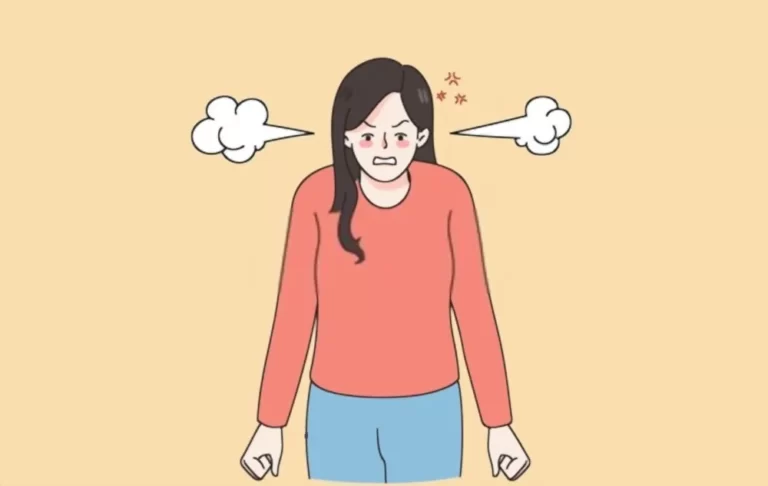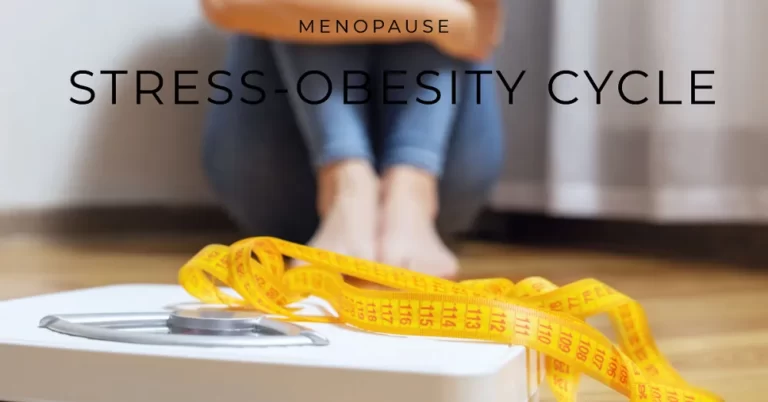Living Through Menopause and Bipolar Depression – Expert Advice on Self-Care
Are you struggling with bipolar depression and the complexities of menopause? Don’t face the challenges alone – let us guide and support you during this overwhelming time.
Menopause and bipolar depression are serious health issues affecting millions of women worldwide.
Menopause causes hormonal changes that lead to a range of physical and psychological symptoms, while bipolar depression, or manic depression, causes erratic mood swings that interfere with daily life. Unfortunately, menopause can exacerbate these symptoms, and many cases go unnoticed.
But don’t lose hope. There are many treatment options available for managing menopause and bipolar depression. Find the approach that suits you and develop a collaborative relationship with supportive providers.
Prioritizing self-care is crucial, too. That means maintaining a balanced diet, exercising regularly, ensuring adequate sleep, managing stress, and setting aside time for relaxation.
Staying aware of how your body and emotions are changing is essential. That’s why we’re here to provide you with detailed information about menopause and bipolar depression.
We’ll explain what bipolar disorder is, how it manifests differently in men and women, and how reproductive cycles affect it. We’ll hopefully overcome these challenges together and get you back on track.
Exploring the Link Between Bipolar Disorder and Menopause
Bipolar disorder is a complex mental health condition affecting millions worldwide. A manic or hypomanic episode alternates with periods of extreme depression.
Many things contribute to bipolar disorder, including genetics, environment, and hormones. One contributing factor is menopause, which may trigger or exacerbate certain symptoms associated with bipolar disorder.
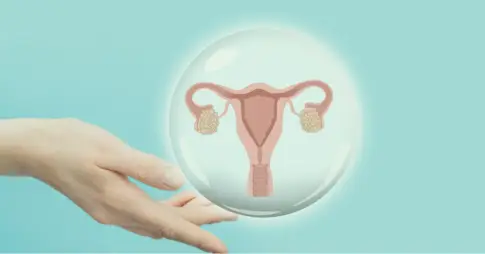
During menopause, a woman’s hormonal balance changes, leading to a decline in estrogen levels and an increase in follicle-stimulating hormone (FSH) and luteinizing hormone (LH). These hormonal changes can significantly impact the neurotransmitters in the brain, such as serotonin and dopamine, resulting in mood swings, irritability, and anxiety.
Menopause symptoms like hot flashes, insomnia, and weight gain can also worsen bipolar disorder symptoms. Studies suggest menopause may cause brain structural changes.
Women with bipolar disorder may experience shrinkage in the brain’s gray matter earlier in life, leading to cognitive decline and memory issues, making it harder to manage their symptoms. Women perimenopausal with subsyndromal depression may experience altered brain microstructures, increasing their risk of depression. It’s essential to address these symptoms promptly to prevent future potential complications.
Studies suggesting menopause as a trigger for late-onset bipolar disorder have been further supported by findings that women who had undergone hysterectomies and/or earlier menopause were more likely to experience manic episodes.
BPD Symptoms during Menopause: What Does It Look Like?
Women with bipolar disorder may experience additional challenges during menopause, including mood swings, depression, and anxiety.
Premenstrual dysphoric disorder (PMDD), a severe form of premenstrual syndrome (PMS), is commonly reported by women with bipolar disorder during menopause. PMDD can cause physical symptoms such as bloating, fatigue, and breast tenderness, as well as psychological symptoms such as depression, irritability, and anxiety.
Women with bipolar disorder may also experience more severe and prolonged mania and depression during menopause. The depressive phase may include hopelessness, lack of energy, loss of interest in activities, and suicidal thoughts. On the other hand, the manic phase may involve excessive happiness, impulsiveness, overactivity, and risky behavior.
Moreover, cycling between the depressive and manic phases may occur more frequently during menopause, affecting daily functioning and quality of life. Some women may experience a mixed state, where they experience symptoms of depression and mania simultaneously, making it challenging to manage their emotions.
Bipolar Disorder: Why is It Called That?
Bipolar disorder, or manic depression, is a mental illness that causes extreme shifts in mood, energy, and activity levels. These shifts are often called “episodes” and can last for days, weeks, or months.

The disorder is called bipolar because it involves two main mood episodes, the highs (mania) and the lows (depression). People with bipolar disorder can experience manic episodes that include feelings of euphoria, racing thoughts, impulsivity, and reckless behavior.
Depression episodes include feelings of sadness, worthlessness, and hopelessness. Sometimes, a person may experience a mixed episode, including symptoms of mania and depression.
Bipolar disorder affects approximately 4.4% of adults in the United States and has been shown to occur equally in both men and women. However, there are notable gender differences in the manifestation of bipolar disorder.
Women with bipolar disorder are more likely to experience rapid cycling, defined as four or more mood episodes in a year, and greater severity of symptoms during manic and depressive episodes.
Men tend to experience more grandiose delusions, increased irritability, and higher rates of substance abuse.
Moreover, reproductive cycles can also play a role in manifesting bipolar symptoms. The hormonal fluctuations during the menstrual cycle, pregnancy, and menopause can affect the severity and frequency of bipolar episodes in women. Some women may experience their first episode of bipolar disorder during or after pregnancy.
Bipolar disorder is categorized into three types – Bipolar I disorder, Bipolar II disorder, and Cyclothymic disorder. Each type is characterized by a unique set of symptoms with three distinct phases.
The mixed and stable phases are considered the intermediate phases of bipolar disorder, while the manic and depressive phases are considered extreme. Each phase is associated with its own unique set of symptoms.
Let’s see a more detailed explanation of each type and take a closer look at each of the phases of bipolar disorder, common symptoms, and how they affect mood, energy, and behavior.
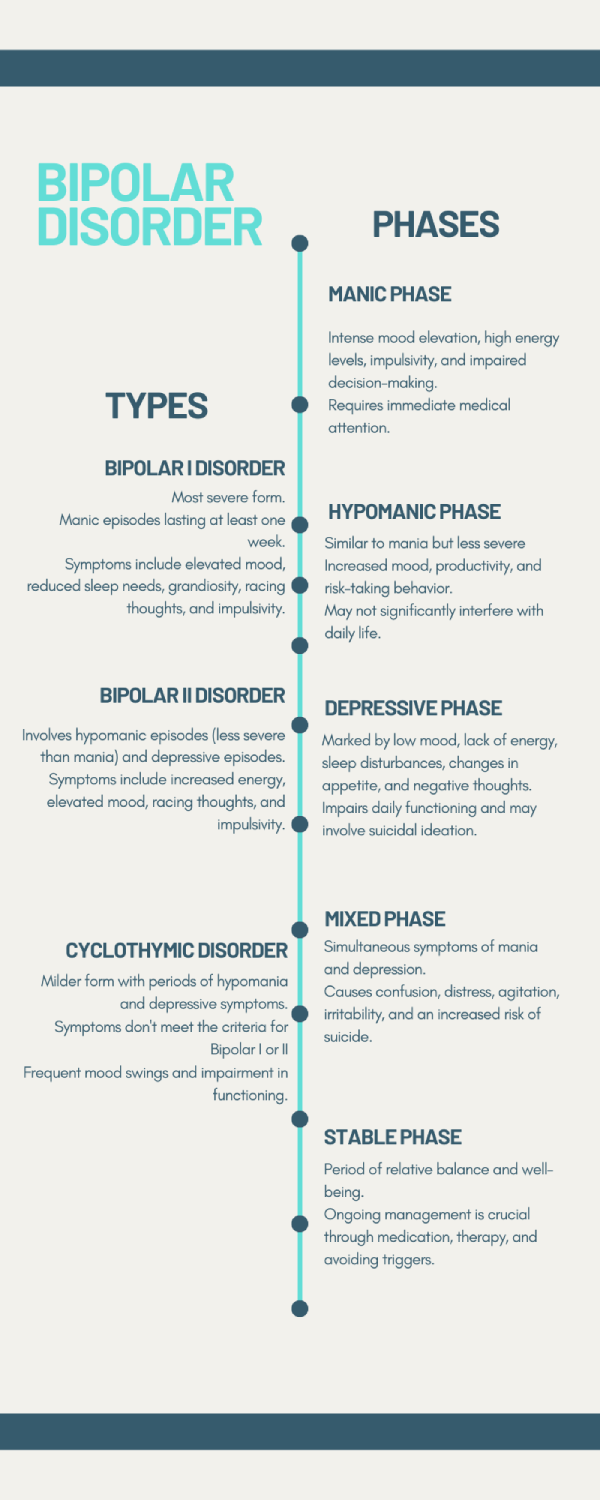
Menopausal Challenges in Managing Bipolar Disorder
Women with bipolar disorder may face additional challenges in managing their symptoms as they approach menopause.

Hormonal Imbalance Triggers Depression
Perimenopause and menopause can significantly impact the mental health of women with bipolar disorder. The changes in hormonal balance during perimenopause can contribute to depressive symptoms due to the “estrogen withdrawal hypothesis.”
Women with bipolar disorder may have an increased risk of developing perimenopausal depression due to hormonal changes. Hormonal imbalances during menopause can exacerbate the symptoms of bipolar disorder, such as mood swings, irritability, and anxiety.
The decreased estrogen levels during menopause can disrupt the balance of neurotransmitters in the brain, leading to severe mood swings and episodes of mania or depression. Women with bipolar disorder may also be at higher risk of engaging in risk-taking behaviors associated with the manic phase of the disorder.
Higher risk-taking behavior associated with the manic phase of bipolar disorder can become more pronounced during menopause, leading to impulsive decision-making or reckless behavior. This behavior can put women at risk for injury or harm.
Research suggests that cortisol and testosterone may play a role in bipolar disorder during menopause. Cortisol is a stress hormone produced by the adrenal gland.
Studies have found that women with bipolar disorder tend to have higher cortisol levels than those without the disorder. Also, perimenopausal women with flat diurnal cortisol levels are more likely to have depression symptoms.
This suggests that cortisol dysregulation may contribute to the onset and severity of bipolar disorder symptoms in menopausal women.
Testosterone is a male hormone that is also present in women. Studies have shown that testosterone may have anxiolytic and antidepressant effects. However, menopausal women tend to have lower levels of testosterone, which may contribute to the development of bipolar disorder symptoms.
Brain Gray Matter Shrinkage
Menopause leads to physical changes in women with bipolar disorder, including gray matter shrinkage in the brain. This shrinkage can result in cognitive decline and memory problems, which makes symptom management more difficult.
Recent studies have shown that several brain structures are affected during perimenopause, including the left putamen, right pallidum, right inferior parietal gyrus, right superior frontal gyrus, and right postcentral gyrus. These structures have different functions, including autonomic involvement, hormonal regulation, higher cognitive functions, motor control, and sexual functions.
Further research indicates that estrogen therapy may slow down the loss of gray matter, and decreases in white matter integrity may occur in depression. Perimenopausal women with subsyndromal depressive symptoms are more susceptible to depression due to altered microstructures in specific brain areas, such as the insula, thalamus, and midbrain.
This altered brain structure is a predictive factor of future depression.
Medication Interactions
Women taking medication for bipolar disorder should be aware of possible interactions with hormonal therapies used during menopause. Estrogen-containing medications may interfere with certain mood stabilizers or antidepressants. Therefore, women with bipolar disorder must communicate any changes in symptoms or medication needs with their healthcare providers.
Increased Stress
One of the major triggers for bipolar disorder is stress. Too much stress, or even sudden changes to a person’s daily routine, can cause an imbalance in their mood and exacerbate symptoms of bipolar disorder.
Menopause can represent a significant life transition and be stressful for many women. Stress can trigger bipolar symptoms and make them harder to manage.
Changes in the body image, house, family life, job, and sex life associated with menopause can also contribute to increased stress levels. Managing menopause symptoms, such as hot flashes and night sweats, can further exacerbate bipolar.
This can lead to manic episodes, depression, or mixed episodes that involve both mania and depression simultaneously. Stressors for people with bipolar disorder can include anything from a change in job or environment to an illness or the loss of a loved one.
Sleep Disturbances and Lethargy
Menopause can lead to sleep disruptions, such as hot flashes or night sweats. Women may experience more severe sleep disturbances or lethargy as estrogen levels decrease.
Not getting enough restful sleep can exacerbate bipolar symptoms and interfere with daily activities. Sleep disturbances already commonly occur in bipolar disorder. Together, they can exacerbate symptoms and make it harder to manage.
Social Stigma
Aside from these challenges, mental health stigma can also impact women with bipolar disorder. Mental health stigma comes in many forms, like stereotyping, labeling, discrimination, and social exclusion.
This can sometimes cause shame and guilt for people with bipolar disorder. According to the National Alliance on Mental Illness (NAMI), stigma is the second most common reason people don’t seek mental health treatment.
Specific bipolar symptoms, such as impulsivity and suicidal behavior, are stigmatized, causing even more harm and shame. Bipolar disorder patients are at a higher risk for suicide than the general population.
Everyone needs to understand that bipolar disorder is a real and valid mental health condition and that seeking treatment for it is a brave and responsible decision.
How to Live Well with Menopause Bipolar? Coping Strategies from Expert Insight
Managing bipolar disorder can be tough. Even when you’re not having mood episodes, you can still feel emotions, and you might have relationship, financial, and career consequences.
Events or situations might trigger your symptoms. Maybe you don’t know why you’re feeling better or worse today.
Good thing there’s stuff you can do to manage bipolar disorder daily. Take a three-pronged approach to bipolar disorder: therapy, medication, and some obvious lifestyle changes.
Cognitive-behavioral therapy (CBT) enables individuals to identify and modify thought and behavior patterns that trigger mood swings. Medication options, such as mood stabilizers, antipsychotics, antidepressants, and sleep aids, help regulate mood-related brain chemicals.
Seeking balance involves adopting healthy habits like sleeping, practicing mindfulness, exercising regularly, eating well, and avoiding certain substances.
Identifying Stressors and CBT
Identifying stressors is crucial in managing and reducing symptoms of bipolar disorder during menopause. Stressors can range from external events like financial problems or relationship issues to internal factors like negative thoughts and emotions.
By identifying stressors, individuals with bipolar disorder can take proactive steps to avoid or reduce them and mitigate the risk of experiencing a depressive or manic episode. Identifying early signs of mania or depression, such as changes in energy levels, sleeping patterns, and behavior, can help a person manage their disorder more effectively.
Cognitive behavioral therapy can be an effective treatment for managing symptoms of bipolar disorder during menopause. This type of psychotherapy focuses on identifying and challenging negative thoughts and beliefs contributing to depressive symptoms.
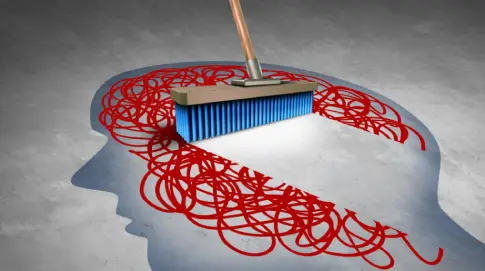
CBT helps people develop more positive and rational thinking patterns, improving mood and reducing the risk of depressive or manic episodes. Stressors can vary from person to person, and what triggers symptoms for one person may not trigger symptoms for another.
Therefore, working with a mental health professional to identify your stressors and develop coping mechanisms is important.
Keeping Notes of Symptoms
Keeping track of symptoms can help individuals with bipolar disorder monitor their mental health and identify patterns in their mood swings. These may include keeping a journal to track mood changes or using a mood-tracking app and identifying potential triggers, such as changes in sleep patterns or shifts in hormone levels.
This can help individuals become more informed about their condition and be better prepared to make lifestyle adjustments to manage their symptoms.
Avoiding Substances Like Cannabis and Alcohol
Substances like cannabis and alcohol can worsen bipolar disorder symptoms. Cannabis and alcohol can exacerbate the symptoms of bipolar disorder.
They can mess with mood stability and trigger mood swings, making it harder to manage. The use of cannabis increases the risk of psychosis and manic episodes.
Psychedelic compounds in cannabis can disrupt mood regulation and worsen symptoms like anxiety, irritability, and insomnia.
Depressive episodes in bipolar disorder can be worsened by alcohol. This affects judgment and can interfere with medication effectiveness, causing mood swings.
The same goes for antidepressants, which can trigger manic episodes in people with bipolar disorder.
Prioritize Medication Adherence
Manage your bipolar symptoms during menopause by considering adjustments to your psychiatric medications. Combining a specialized prescription for insomnia could also provide relief for some women.
Bipolar disorder is a chronic condition that often requires long-term treatment. Regularly taking prescribed medications increases the chances of achieving and maintaining symptom stability, reducing the risk of relapses, and enhancing overall treatment effectiveness.
Speak up about side effects when talking to healthcare providers. Certain medications might have temporary side effects, while others may need changes or different options.
Seek treatment from a mental health professional and a reproductive endocrinologist or gynecologist to address your needs effectively. But don’t skip doses or quit taking medication, as this can make your mood unstable and worsen symptoms.
Always partner with your healthcare provider to find the best treatment plan.
Try Mindfulness Techniques
Mindfulness techniques, such as meditation, deep breathing exercises, or yoga, can help individuals reduce stress levels. Mindfulness techniques promote present-moment awareness and non-judgmental acceptance of thoughts and emotions.
Both menopause and bipolar depression can bring about heightened stress and emotional challenges. Engaging in mindfulness allows individuals to cultivate a sense of calm, improve emotional regulation, and alleviate stress-related symptoms.
Mindfulness techniques can help relax the mind and body, promoting better sleep hygiene. Incorporating mindfulness practices into bedtime can create a calming environment and support more restful sleep.
Engaging in Moderate Exercise
Menopause and bipolar depression can disrupt energy levels and sleep patterns. Moderate exercise can increase energy levels and combat fatigue, helping individuals feel energized.
Moderate exercise, such as walking, swimming, or cycling, releases endorphins in the brain, which are natural mood boosters. These endorphins can help alleviate symptoms of depression and promote a more stable mood. Regular exercise has been shown to reduce stress and anxiety and improve overall emotional well-being.
Additionally, regular exercise can contribute to better sleep quality, which is essential for overall health and mood regulation.
Engaging in exercises or activities that are enjoyable can increase motivation and adherence. Walking in nature, swimming, dancing, or participating in group fitness classes.
Experiment with different activities and find what resonates with you. Start with achievable goals and gradually increase the duration and intensity of your exercise routine.
Setting realistic expectations will keep you from feeling overwhelmed or burned out. Remember, even short bursts of physical activity throughout the day can make a difference.
Integrate exercise into your daily routine to make it a consistent habit. For example, taking a brisk walk during lunch breaks or opting for the stairs instead of the elevator.
Small changes can add up and contribute to a more active lifestyle.
Micronutrient Supplementation
Micronutrients, such as vitamins, minerals, and omega-3 fatty acids, play a vital role in brain health and mood regulation. Supplementing the diet with specific micronutrients may help people with bipolar disorder, especially if they’re deficient.
Consultation with a healthcare professional can help determine if supplementation is necessary and guide appropriate dosage and selection.
Dietary Modifications
Certain dietary adjustments can help support mood stability and overall health for individuals with bipolar disorder. Examples include:
- Increasing omega-3 fatty acids: Omega-3 fatty acids, found in fatty fish, flaxseeds, and walnuts, have shown potential benefits for mood regulation and reducing symptoms of depression. Adding these sources of omega-3s to the diet may be helpful.
- Reducing caffeine intake: Caffeine can interfere with sleep patterns and increase anxiety or mood swings. Limiting caffeine intake, particularly in the evening, can support better sleep quality and overall mood stability.
- Balancing blood sugar levels: Maintaining stable blood sugar levels through regular, balanced meals and snacks can help regulate mood and energy levels. Avoiding excessive refined sugars and opting for whole foods can be beneficial.
- Considering a well-rounded diet: Aiming for a diet rich in fruits, vegetables, whole grains, lean proteins, and healthy fats can provide essential nutrients and support overall physical and mental well-being.
Practicing Good Sleep Hygiene
Regular sleep schedules and good sleep hygiene are essential for people with bipolar disorder. Sleep helps your body’s internal clock run smoothly.
A lack of sleep can trigger hypomania or mania, while too much sleep can trigger depression. Sleep and mood patterns are connected.
However, being aware of how important sleep is can also cause anxiety about bedtime, making it hard to fall asleep. A therapist or doctor can help you develop strategies, like journaling or setting up designated “worry time” earlier in the day, to reduce rumination and promote better sleep.
Sleep hygiene is key to establishing a soothing bedtime routine and consistent sleep-wake times. Before bedtime, avoid screens, create a comfortable sleep environment, and engage in relaxing activities to signal the body to wind down.
It’s also good to limit stimulants like caffeine and nicotine.
Cheerful Distractions
Creating moments of cheer and lightheartedness can help divert attention from negative thoughts or stressors. Engaging in activities that bring laughter and joy, such as watching funny movies, reading humorous books, or participating in recreational activities, can provide a much-needed mental break and boost mood.
Finding activities that bring joy and pleasure can significantly impact well-being. Incorporating daily routines of activities like listening to uplifting music, taking leisurely nature walks, or engaging in hobbies that spark enthusiasm can reduce stress levels and enhance overall mood and satisfaction.
Focusing on what makes you feel good is important to managing bipolar disorder. While it’s necessary to recognize patterns or behaviors that may worsen symptoms, it’s equally valuable to identify patterns that bring positivity and well-being.
Rather than constantly scrutinizing what’s wrong, it’s beneficial to reinforce what’s working well for you. For instance, if you notice that certain times of the year, such as fall or spring, trigger mood cycles, you can use those periods to emphasize lifestyle habits that make you feel great.
Positive Social Support
Maintaining connections with loved ones and fostering positive social interactions are vital for emotional balance. Phone calls, video chats, or socially distanced activities with family and friends can provide emotional support, understanding, and connection.
These interactions can reduce feelings of isolation and enhance overall mental well-being. Talking to a mental health provider or joining a support group can provide an invaluable sense of comfort and understanding.
Supportive Strategies
- Keep the conversation open: Maintaining open and honest communication with your healthcare providers is key. If you experience any side effects or have concerns about your medications, speak up and share your thoughts. This allows your healthcare team to understand your needs better, make necessary adjustments, or explore alternative options that can work for you.
- Medication management tools: Use helpful tools to manage your medications effortlessly. Consider using pill organizers, reminder apps, or setting alarms to establish a consistent routine for taking your medications. These practical tools can fit into your busy schedule and support you in staying on track with your medication regimen.
- Therapy and counseling: Therapy or counseling can be valuable in supporting your medication adherence. Therapy sessions provide a safe and supportive environment to discuss challenges, develop effective coping strategies, and address any obstacles hindering your medication routine. Therapists are there to help you navigate through any underlying factors that might impact your adherence.
- Reach out for help: It is important to remember that you are not alone and there are resources available. Consult a mental health professional or join support groups online or locally.
When trying to calm a bipolar person, it is important to remain patient and supportive. Demonstrating empathy and understanding can go a long way in helping someone feel safe and supported in their journey toward managing their disorder.
Encouraging healthy habits, reducing stressors, and being there for them during times of need are all important steps to providing the best care possible. Everyone’s journey is unique; finding the right treatment plan requires collaboration with your healthcare providers.
Is it menopause or bipolar?
Menopause and bipolar disorder symptoms can overlap. There are, however, significant differences between the two conditions.
Women experience menopause when their bodies stop menstruating and their hormone levels change, usually around 50. Common symptoms of menopause include hot flashes, night sweats, mood swings, irritability, and difficulty sleeping.
On the other hand, bipolar disorder is a mental health condition that affects a person’s moods, energy levels, and ability to function. People with bipolar disorder experience episodes of mania and depression, which can last for weeks or months.
While some symptoms of menopause and bipolar disorder may be similar, there are key differences to look out for. Menopause symptoms are usually temporary and tend to improve over time, whereas bipolar disorder is a chronic condition that requires ongoing treatment.
Additionally, menopause symptoms are usually more physical, such as hot flashes and insomnia, while bipolar disorder is primarily a mental illness with symptoms affecting mood and behavior.
But menopause can contribute to the onset of mental health conditions such as bipolar disorder. Women going through menopause may be more vulnerable to the psychological effects it has on them, including feelings of depression and anxiety, which can, in turn, trigger a bipolar episode.
Therefore, if you or someone you know is exhibiting signs of both menopause and bipolar disorder, it is important to consult a healthcare professional. They can help you determine the underlying cause of your symptoms and provide a personalized treatment plan that best suits your needs.
Accept the Challenge, Live with Them Proudly, and Beat the Blues
Managing bipolar disorder during menopause may be challenging, but it’s also an opportunity for personal growth and self-care. It starts with loving yourself for who you are and accepting where you are in life.
Embrace the struggle instead of running away from it. The first step to getting help and support is recognizing the phases of bipolar disorder.
Keep your mental health in check for overall health and stability and live a balanced lifestyle. Seek medical advice if you notice any signs of bipolar disorder.
Professional help and a strong support system are vital for managing bipolar disorder and improving your quality of life. Women with bipolar disorder can make it through menopause successfully and thrive with the right treatment and support.
You’re not alone in this journey; asking for help shows strength, not weakness. Let’s end the stigma around mental health challenges, prioritize self-care, and work towards a brighter, more stable future.
Write your suggestions, experiences, and advice in the comments below.
We would love to hear from you.
How have you managed your bipolar disorder during menopause? What strategies worked best for you?
Share your tips, advice, and experiences in the comments section. Your support could help someone else on their journey toward wellness.

